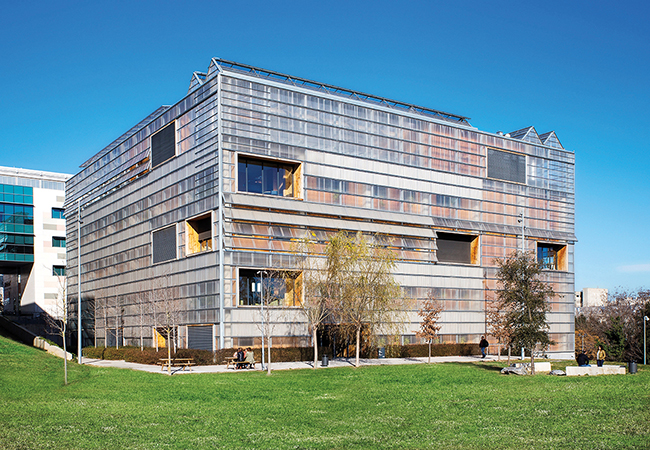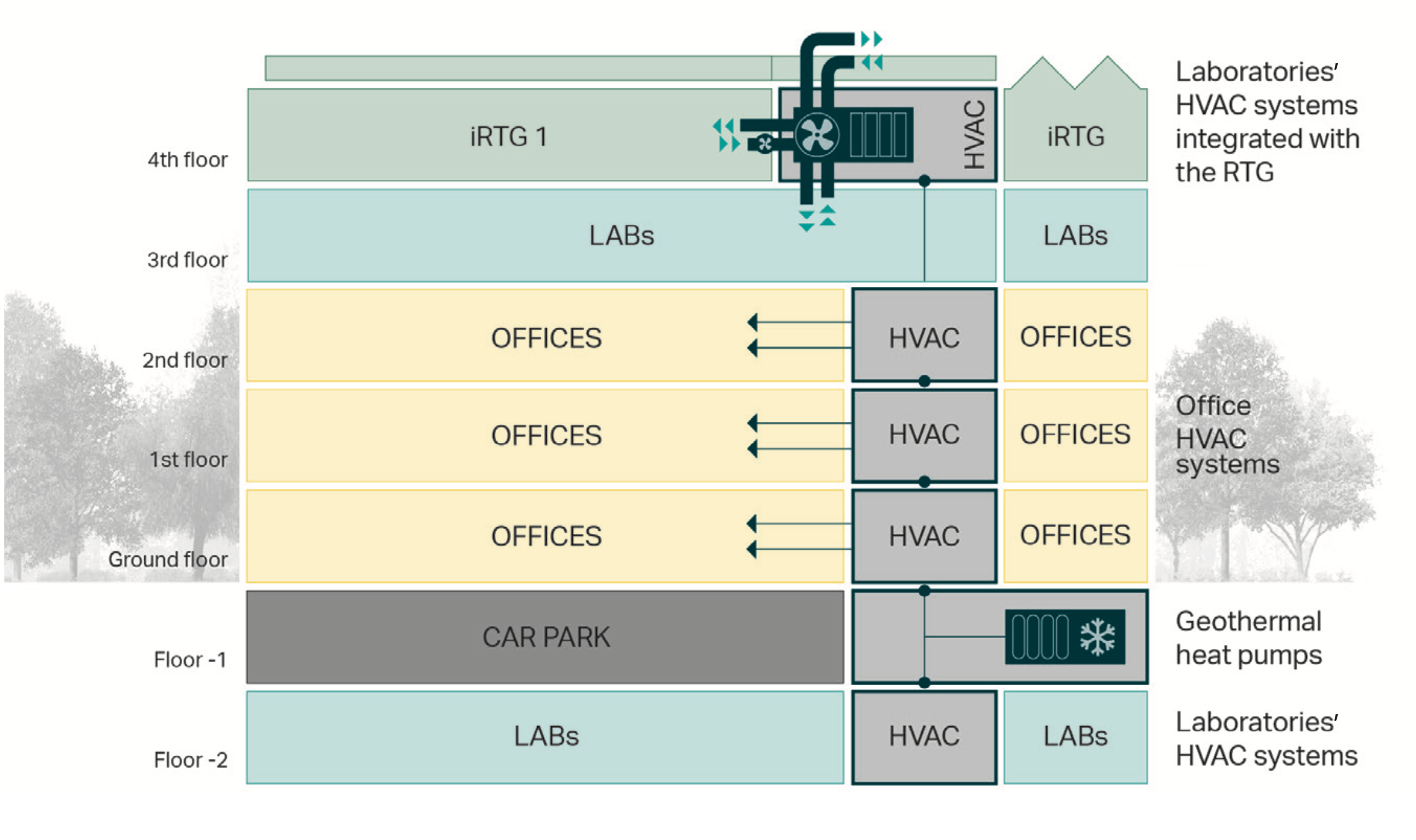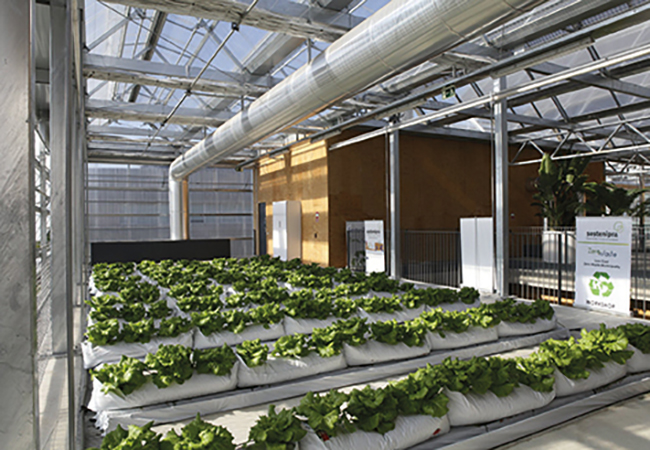
Prototype microalgae building enclosure. Reproduced by permission of Kyoung Hee Kim
Biology and building services are rarely mentioned in the same sentence, but imagine if our buildings could be serviced by plants and natural processes fuelled by organic waste and sunlight.
This sounds very far-fetched, but some aspects are closer than you might think. After all, the ecosystem has been conditioning our air and cleaning our water for billions of years.
Human-designed systems consume resources from mines, oil fields and reservoirs, and release pollutants, creating a degenerative pattern of consumption. In contrast, natural systems use locally available resources; they are highly complex structures and networks that use water, air and nutrients, and energy from the sun. By-products are life-friendly and recycled into new organisms. The whole ecosystem is dynamic and self-perpetuating, with life creating the conditions required to sustain life.
Over the past 30 years, we have designed sustainable buildings that use less energy, water and materials, and that generate less waste and pollutants. This has been invaluable in raising awareness and starting the journey towards improving performance, but it has only made the built environment less harmful to the planet. Increasing natural disasters and freak weather events are a stark reminder that this is no longer enough. What if we could design buildings that have a positive impact on the planet – that restore and regenerate natural systems and even metabolise, like living organisms?
Plants have been used to treat wastewater in buildings for more than 60 years (since the advent of the Living Machine, a natural wastewater treatment system) and interior living walls help clean air through phytoremediation. More recently, rooftop greenhouses have been integrated into HVAC systems, microbial fuel cells are generating energy from wastewater, and microbial façades are providing multiple functions in servicing buildings.

Figure 1: The ICTA Rooftop Greenhouse Lab
Active green walls
One way we can employ natural systems in our buildings is active green walls. The active modular phytoremediation system, or green wall, installed in the Public Safety Answering Call Center II in New York has hydroponically-grown plants that clean the building’s internal air. The plants’ roots are exposed, which allows rhizomes on the roots to digest airborne pollutants, such as volatile organic compounds and particulate matter1.
Anna Dyson, from the Center for Architecture, Science and Ecology, notes: ‘Conventional HVAC systems are almost like antibiotics. They take the airstreams and filter them, and they can take the good out with the bad’ – whereas a green wall actually improves the air, like probiotics instead of antibiotics2. The plants clean the air and enrich the microbiome of the building, creating a healthier internal environment. As they are oxygenating the air, they also have the potential to reduce the amount of fresh air needed to be brought into the building.

Figure 1: the integration of the HVAC system
Building integrated greenhouses
At the Universitat Autònoma de Barcelona, the Institute of Environmental Science and Technology (ICTA) has constructed a rooftop greenhouse that is integrated into the building (Figure 1). Residual heat from the laboratory and offices maintains the greenhouse temperature at night and in the heating season, while the greenhouse provides a buffer space that moderates solar gain and heat loss for the building. The CO2-rich air from the building is used to increase crop yields, and the pre-heated, filtered and oxygenated air is fed back into the building. The result is a symbiotic relationship where food is grown where it is consumed, so reducing the need to heat vast polytunnels in southern Spain.

Figure 1: crops growing in the greenhouse
Microalgae façades
Microalgae façade systems feed on the nutrients in wastewater and absorb CO2 produced by occupants when it is bubbled through the array. The ‘bioreactor’ façade absorbs energy from the sun, which can then be piped to heat exchangers that reclaim the heat to supplement space heating and hot-water demand, moving heat out of the living space in the summer. The microalgae generates oxygen, reducing the demand for fresh air from outside, and sequesters the CO2 produced by occupants into biomass that can be used for energy generation, pharmaceuticals or food.
Kyoung Hee Kim and her team at the Integrated Design Research Lab at the University of North Carolina EcoClosure have created an elegant prototype of interlocking bioreactors that can be retrofitted against windows (see image, opposite).
Microbial fuel cells
This amazing technology is fed on wastewater, including blackwater, and takes advantage of electricity that is released when the bacteria break down sugars as part of respiration. The system has been trialled in a school in Uganda, providing lighting for the toilet block and treating the sewage before it enters the watercourse.
Ioannis Ieropoulos developed microbial fuel cells at the University of the West of England, and is now head of the water and environmental engineering group at the University of Southampton. The aim is to scale up the technology and deploy it in buildings as part of the Living Architecture project.
Conclusion
The abilities of natural processes are beyond anything that our technology can do. How else could a system be designed that can treat blackwater safely while generating electricity, biomass and nutrients as by-products? Similarly, creating a façade that can provide reactive shading, sequester carbon, generate oxygen, treat wastewater and produce biomass is some design challenge without the help of nature!
About the author
Dave Cheshire, a director at Aecom, sets out the regenerative building agenda and design principles in his book Regenerative by Design
References:
1 Active Phytoremediation Wall System, Architect, Sept 2012, bit.ly/CJAPWSAM
2 Living Wall, Fast Company, July 2016 bit.ly/CJFCLivWall
A session on nature-based climate resilience took place at the CIBSE IBPSA-England Technical Symposium at UCL in April. See www.cibse.org/symposium where papers will be uploaded later this year
